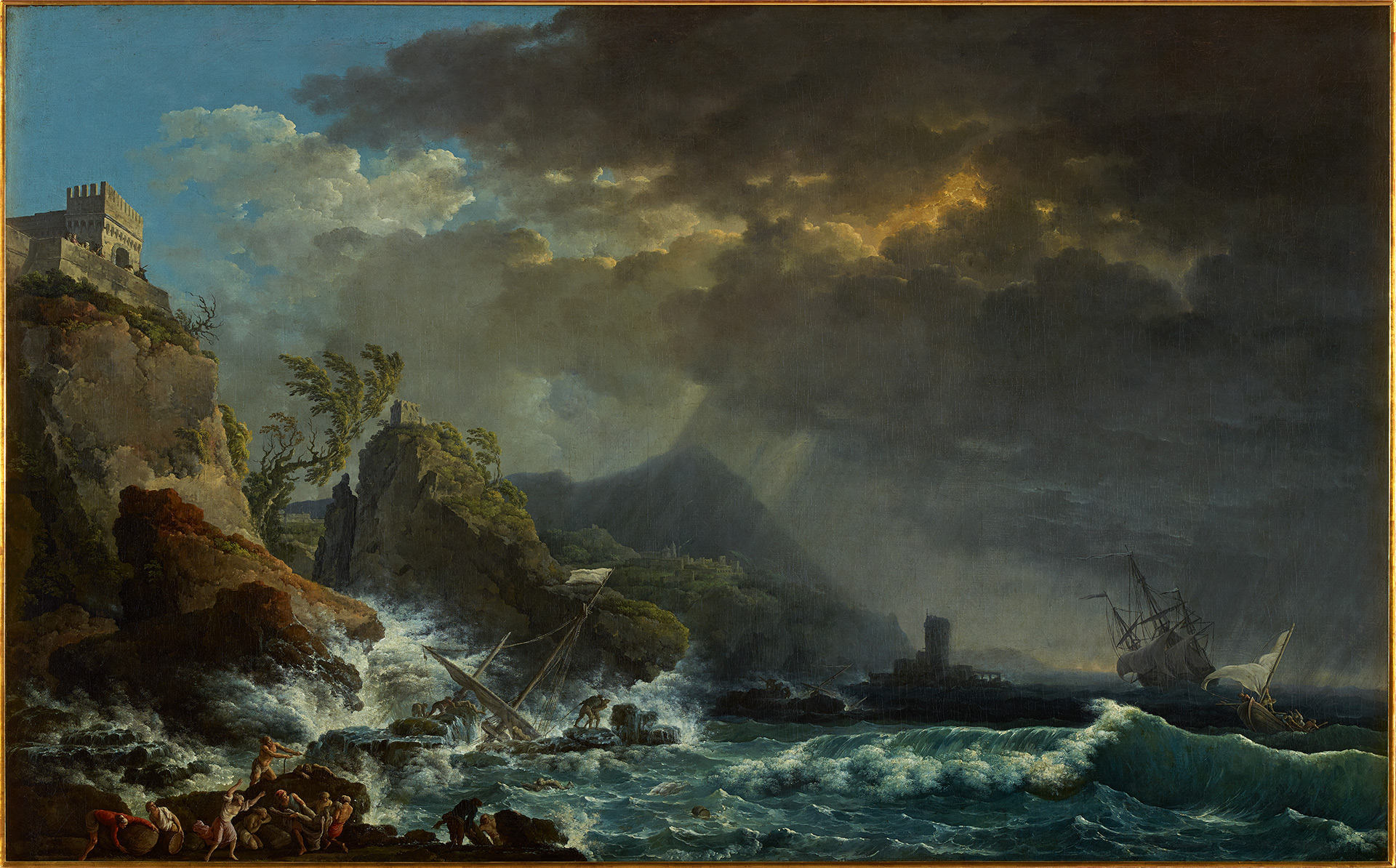
Carlo Bonavia (Active in Naples from 1751 to 1788)
Shipwreck in a Rocky Inlet
1757
WORK INFORMATION
Oil on canvas, 125 x 205 cm
OTHER INFORMATION
Signed and dated at the bottom left, on a barrel: "C. BONAVIA / P. A. 1757"
Very little is known about the life of this painter, who presumably came from Rome to Naples shortly before 1750, as many of his works dated between 1751 and 1788 are set in the Parthenopian city and its environs. He followed in the footsteps of Salvator Rosa and Leonardo Coccorante, but his greatest stylistic and thematic inspiration was Claude Joseph Vernet (1714–1789), active in Naples from 1737 to 1746; in fact, Bonavia's painting is so similar to Vernet's that even today they are often confused when attempting to attribute unsigned works. Bonavia is known for his landscapes and seascapes, almost always a spectacular blend of fantasy and reality. Like Vernet, on many occasions he probably found buyers for his work among the numerous British travellers who visited Italy on the Grand Tour, but his most important confirmed patron was Count Karl Joseph Firmian, imperial ambassador to the court of Charles VII of Naples from 1753 to 1758, who we know owned as many as eighteen works by Bonavia, including landscapes and views with mythological and literary motifs (Villa Firmian at Posillipo, 1756, now in the Harrach Collection at Schloss Rohrau).
The painting we see here is typical of Bonavia, with large, ominous storm clouds unleashing a torrential rain that has whipped the sea into a frenzy of crashing waves; in the foreground we see a ship dashed against the rocks by the pounding surf, while a larger vessel and a raft, still at a certain distance from the cliffs, pitch wildly in the background. His pictures repeatedly feature remarkable natural events and sights—the eruption of Mt. Vesuvius, seascapes under a full moon (1757, National Motor Museum, Beaulieu), the Teverone Waterfalls (1755, Museo di Capodimonte, Naples, and 1787, Honolulu Museum of Art), storms and coastal shipwrecks like the one shown here—but also frequently incorporate tiny figures of fishermen, peasants or soldiers. In this painting, while a group of men struggle to secure the vessel or retrieve barrels from the sea while others guide one of the unfortunate victims, curious spectators contemplate the tragedy from a lofty fortress.
Contrasts are the most salient element of Bonavia's work. In this picture, the undulating contours of the grey clouds are juxtaposed with the straight lines of the falling rain and the white foam of the waves; and despite the storm, a patch of pristine blue sky is visible on the left. The cliffs are surmounted by manmade fortifications, and further off, on dry land, we see a town of assorted structures. The painter usually preferred simple, more or less imaginary ruins, but sometimes he did reproduce existing structures: for instance, the Temple of Neptune and Caligula's Bridge at Pozzuoli, or the Castel dell'Ovo in Naples, which he copied from Vernet (1746 work owned by the Duke of Buccleuch) on two occasions, once in 1758 (whereabouts unknown) and again in 1788 (now in Honolulu). Bonavia composed this scene on a strong diagonal, from the heights on the left to the open sea, and varied his use of light and colours to heighten the almost pre-Romantic effects.
In contrast to the peacefulness of more topographic visions, like those of Joli and Fabris, Bonavia expressed his attitude towards nature through the aforementioned contrasts and variations, thus considerably prolonging the notion of landscape painting that Vernet had introduced in Naples. His painstaking craftsmanship adds to the appeal of works that are increasingly appreciated today. [<José Manuel Cruz Valdovinos]

